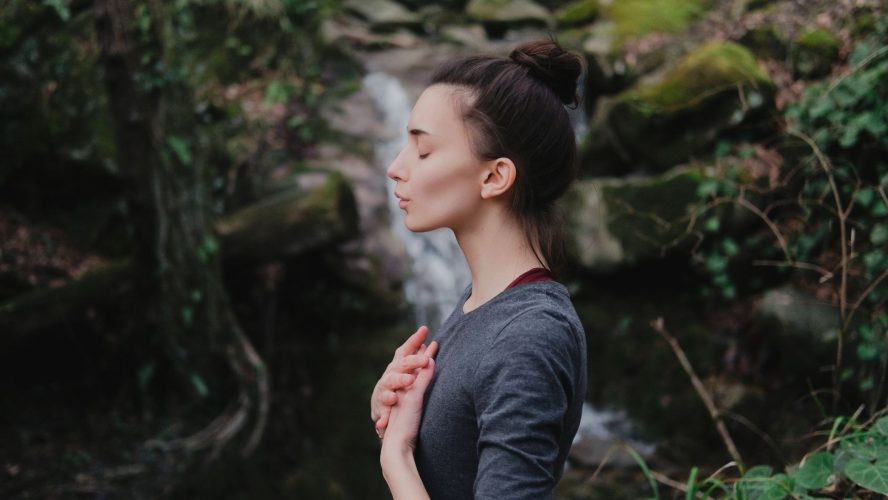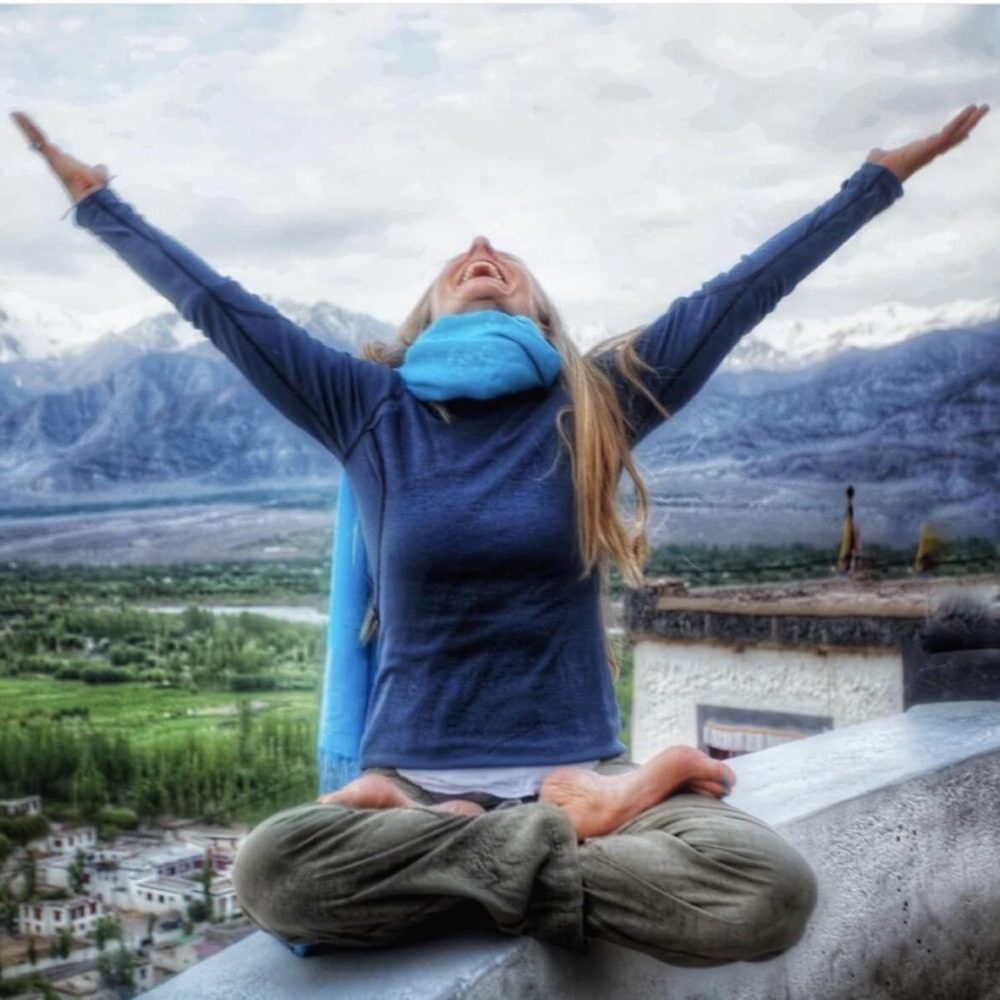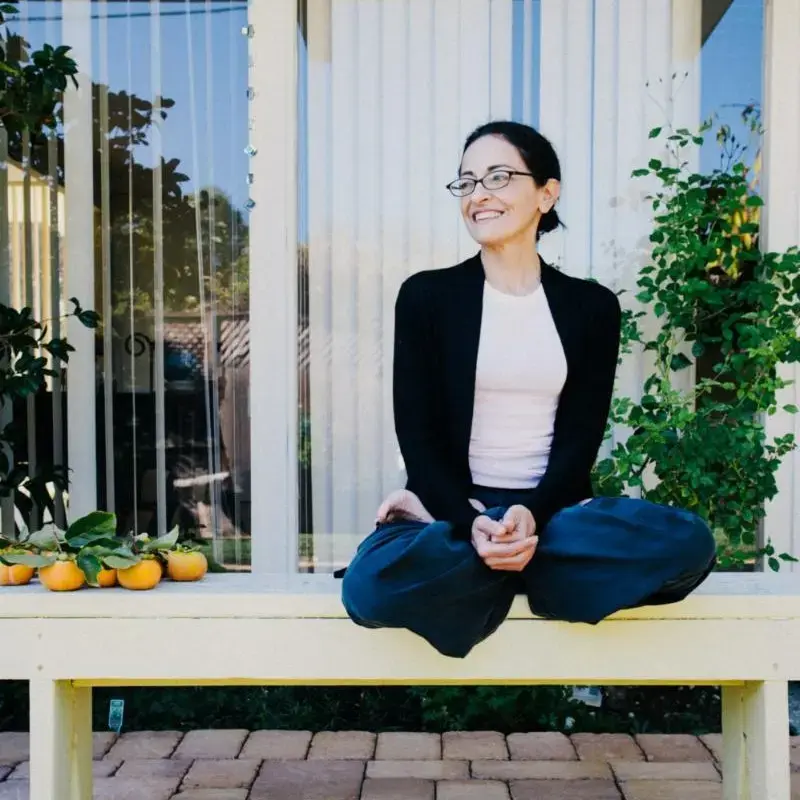It’s a few years ago, and I’m in Denmark. I am about to demo my very first yoga class. My teacher and co-students are all Danish and very well-experienced in their yoga practice. My heart pounds, my lips tremble uncontrollably, my breathing is shallow and fast paced. I am officially super-nervous and can’t even imagine how I am going to be able to make it through the 20-minute class. Maybe you can relate?
“Take a deep breath in,” my teacher kindly says to me. “Breathe it all out,” she continues. “You will be fine… No reason to be nervous.” But I already am, I say to myself. An all-too familiar situation for me. When I am about to “perform,” or go through a seemingly meaningful and important situation in which I will be speaking, making a presentation, or teaching, this happens. I lose my breath, and with it goes my focus and inner strength.
I know in my gut that I (it) will be okay and that eventually I will enjoy this experience I’ve so been looking forward to. After all, I’ve tried it before. But how I have wished, so many times in the past, I didn’t have to go through such a stressful moment.
When this happens, it’s like not being present in the body. Instead, performance stress is often caused by the mind being bombarded by unconsciousness, limiting beliefs that get the flow of energy trapped in the body; for instance, I can’t do it, I’m not good enough… I’m not worthy; why would they listen to me?… No one will like it/love me… (fill in the blank).
Who would not feel really nervous right before having to perform with even just one of these limiting beliefs? In a very short time, the inner experience is the opposite of love; to be more precise, the opposite of self-love; and, the very opposite of kindness and compassion to oneself.
Fast forward a few years later. As it turns out, my teacher was right all along. It’s in our DNA – breath can help calm us down. How many times have we been suggested to slow down and take a deep breath? Breathwork in itself is a practice of love, kindness, and compassion. It’s a practice of presence.
Breathwork has changed my life, in more ways than I could even imagine. Not only has it turned my speaking and performing experiences 180 degrees toward a much better and enjoyable experience, it has also spread its positive effects into many other areas of my life.
- I’ve become a better listener.
- I am kinder and more self-loving.
- I am more present.
- I am stronger and more confident.
- I feel more at peace.
Like yoga, breathwork is an ancient practice. Science is just beginning to provide evidence that the benefits of this ancient practice are real. For example, studies have found that breathing practices can help reduce symptoms associated with anxiety, insomnia, post-traumatic stress disorder, depression, and attention deficit disorder. In addition, benefits include mood management, physical performance, clarity, focus, and sleep, pain relief, and overall well-being.
Now that we are in the month of February, the month of the year that focuses on love, friendship, and kindness, what better time for me to share with you the loving and kind practice of breathwork? Here are three techniques that (in my experience) have increased my quality of life significantly:
Diaphragmatic Breathing
This is a basic breathing practice that is accessible to everyone and can immediately provide benefits. It can also be done anywhere. Sit, stand, or lie down on your back. Place your hands on your abdomen. Slowly inhale through your nose, feeling your abdomen rise against your hands, and allowing your ribs to expand. Then, slowly exhale through your nose, feeling your abdomen release, and your ribs relax.
Continue this breathing for as long as you wish. Start with five to ten minutes.
Remember that you deserve some time to recharge.
Alternate Nostril Breathing (nadi shodhana)
This practice can calm the nervous system and improve heart rate variability, the variation in the time between heartbeats. Read my recent article to learn how to do it!
Skull-Shining Breath (kapalbhati)

This helps clean the sinuses and improves concentration. For a better illustration of how to practice kapalbhati, here are the steps as outlined by the Art of Living:
- Sit in a comfortable position with your spine straight. Place your hands on your knees, palms facing the sky. You may choose to sit cross-legged on the floor, on a chair with feet flat on the floor, or in hero pose (virasana, which is sitting on your heels with knees bent and shins tucked beneath the thighs).
- Take a deep breath in. As you exhale, contract your belly, forcing the breath out in a short burst. You may keep a hand on your stomach to feel your abdominal muscles contract.
- As you quickly release your abdomen, your breath automatically should flow into your lungs.
- Take 20 of these breaths to complete one round of kapalbhati breathing.
- After completing one round, relax with your eyes closed and observe the sensations in your body.
- Do one or two more rounds to complete your practice.
I still get nervous, especially the very first time I will be presenting myself to others, or when I ask a question in a room full of new, amazing people. But, I know better now. I know that when I feel my heart pounding, it’s a sign that my body is telling me to breathe, be kind, and loving to myself.
















